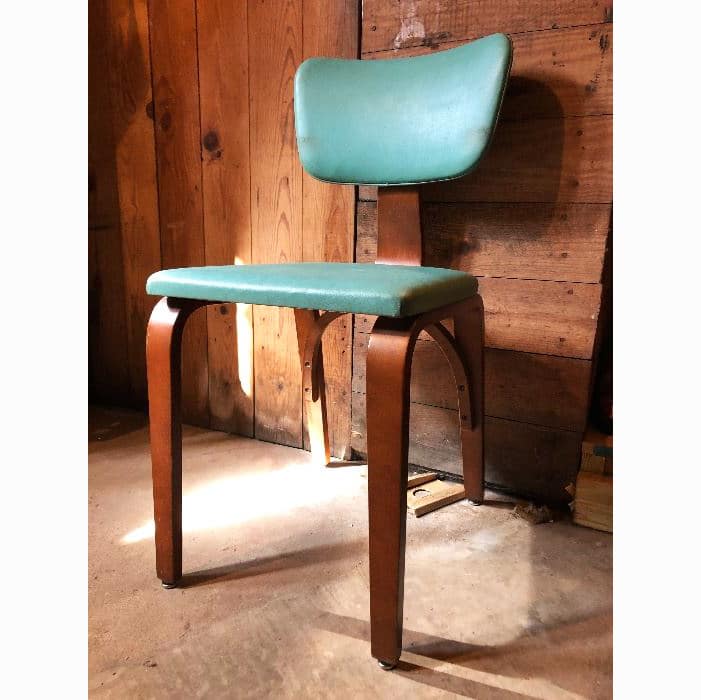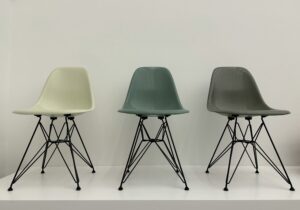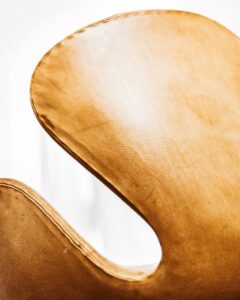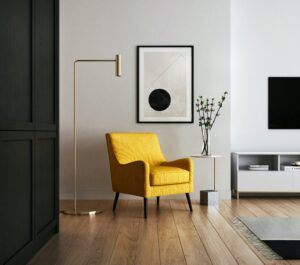
Walking through an estate sale, you spot a sleek wooden piece with tapered legs and clean lines. Your heart skips a beat–could this be authentic mid-century modern worth hundreds or thousands? 💫 Or, is it a retro reproduction from the 1990s worth a fraction of that price?
For estate sale enthusiasts, distinguishing between authentic mid-century modern furniture and retro reproductions can mean the difference between scoring a valuable treasure and making an informed purchase decision. Let’s dive into the key differences that will help you shop smarter and invest wisely. 🕵️♀️
What Exactly Is Mid-Century Modern? 🏠
True mid-century modern design emerged from roughly 1945 to 1965, born from the post-war optimism and new manufacturing techniques of the era. Designers like Charles and Ray Eames, George Nelson, and Arne Jacobsen created furniture that emphasized function, featured clean geometric lines, and celebrated new materials like molded plywood and fiberglass.

The style rejected ornate Victorian excess in favor of simplicity, bringing the outdoors in with large windows and open floor plans. Think sleek, uncluttered designs that still look fresh and contemporary today.
The Retro Revival: When Nostalgia Meets Commerce 📺
Fast-forward to the 1990s and 2000s, when mid-century modern experienced a major revival. Suddenly, furniture stores were producing “retro” pieces inspired by those iconic 1950s and 60s designs. While these pieces captured the aesthetic, they often lacked the craftsmanship, materials, and attention to detail of their predecessors.

This retro boom continued through the 2010s, fueled by TV shows like “Mad Men” and a growing appreciation for vintage style. The result? A market flooded with mid-century inspired pieces that can fool the untrained eye.
Key Differences to Look For 🔍
Construction and Materials 🔨
Authentic Mid-Century Modern:
- Solid wood construction, often walnut, teak, or rosewood
- Metal components are typically brass, chrome, or steel
- Joints often feature sophisticated techniques like dovetails or mortise-and-tenon
- Hardware feels substantial and operates smoothly
- Upholstery materials were often high-quality wool, leather, or durable synthetics

Retro Reproductions:
- Veneer over particle board or MDF is common
- Metal components may be painted to look like brass or chrome
- Joints often rely on screws, staples, or simple glue
- Hardware may feel lightweight or operate roughly
- Upholstery tends to be polyester blends or lower-grade materials

Design Details ✏️
Authentic Pieces:
- Proportions feel balanced and carefully considered
- Details serve both form and function
- Tapered legs are typically solid wood, not hollow
- Curves and angles appear deliberate and refined
- Original pieces often show subtle wear patterns consistent with age
Reproduction Pieces:
- Proportions may feel slightly “off” or exaggerated
- Details might be purely decorative
- Tapered legs may be hollow or attached rather than integral
- Lines might appear forced or overly stylized
- Wear patterns (if any) often look artificial or inconsistent
Labels and Markings 🏷️
This is where your detective work pays off. Authentic mid-century pieces often bear:
- Manufacturer labels or stamps (Herman Miller, Knoll, Eames, etc.)
- Designer signatures or marks
- Production numbers or dates
- Patent information
Reproductions might have:
- Generic manufacturer names you don’t recognize
- Labels that look too new or crisp
- Missing information about designers or patents
- Contemporary manufacturing codes or materials lists
The Value Gap: Why Authenticity Matters 💰
The price difference between authentic and reproduction pieces can be staggering. An original Eames lounge chair might sell for $3,000-$7,000, while a reproduction could be found for $300-$800. A genuine George Nelson bubble lamp might command $500-$1,200, while a modern interpretation sells for $50-$200.

Beyond monetary value, authentic pieces offer:
- Investment potential – Quality mid-century pieces often appreciate over time
- Superior craftsmanship – Original pieces were built to last decades
- Historical significance – You’re owning a piece of design history
- Unique character – Authentic pieces have subtle details reproductions miss
Shopping Smart at Estate Sales 🛍️
When browsing estate sales, knowledge is power. Understanding the difference between authentic mid-century pieces and reproductions helps you:
- Make informed decisions about your purchases
- Understand the pricing behind different pieces
- Appreciate the craftsmanship and history you’re investing in
- Build a collection that aligns with your goals and budget
Remember, both authentic and reproduction pieces have their place in the market—it’s all about knowing what you’re buying and why! 😊
Your Estate Sale Strategy 📋

Before You Buy: 📝
- Research first – Familiarize yourself with major designers and manufacturers
- Bring a flashlight 🔦 – Check construction details and labels in poor lighting
- Test functionality – Open drawers, sit in chairs, check for smooth operation
- Take photos 📸 – Research pieces on your phone before committing
- Ask questions – Find out what the sellers know about the piece’s history
Making the Decision: ✅ Even if a piece isn’t authentically mid-century, it might still be worth buying if:
- The pricing reflects its reproduction status
- The quality and construction are solid
- You love the design for your own use
- It fits your budget and style needs
The Bottom Line 🎯
Whether you’re hunting for investment pieces or simply love the clean lines of mid-century design, knowledge is your best tool. Authentic mid-century modern furniture offers both aesthetic appeal and investment potential, while quality reproductions can provide the look you want at a more accessible price point.
The key is knowing which category your potential purchase falls into, so you can make an informed decision. With practice, you’ll develop an eye for spotting those telltale signs of authenticity—and maybe even uncover that perfectly priced gem every estate sale enthusiast dreams of finding! 🏆
Happy hunting, and remember: the best estate sale finds come to those who do their homework first! 📚✨

Planning your next estate sale adventure? Check out our upcoming sales and let our experienced team help you navigate the treasures waiting to be discovered. Visit our website for current listings and expert insights into the world of estate sale shopping.

